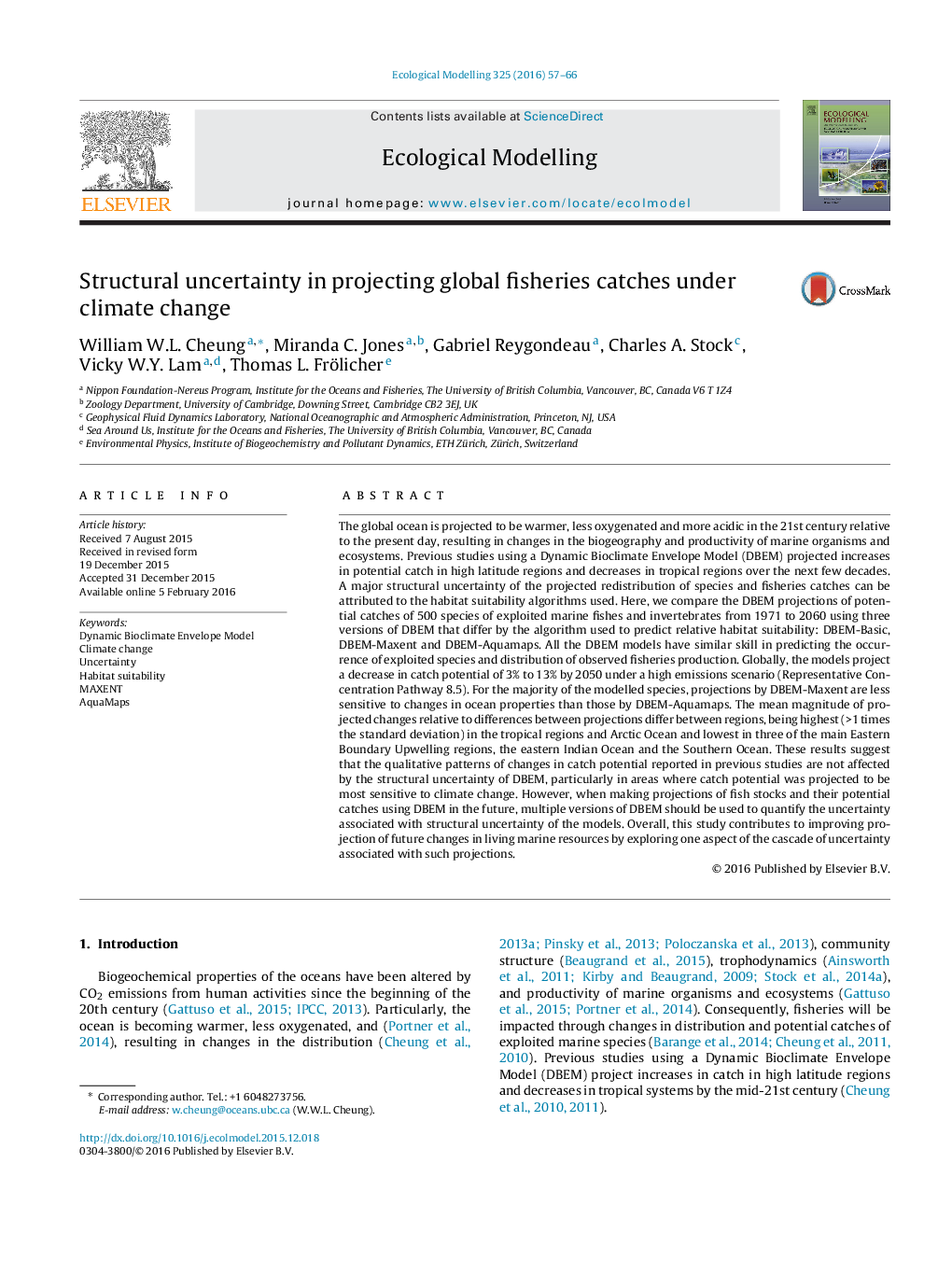| کد مقاله | کد نشریه | سال انتشار | مقاله انگلیسی | نسخه تمام متن |
|---|---|---|---|---|
| 4375583 | 1617422 | 2016 | 10 صفحه PDF | دانلود رایگان |
• Three versions of DBEM: DBEM-Basic, DBEM-Maxent and DBEM-Aquamaps have similar skill in predicting the occurrence of exploited species and distribution of observed fisheries production.
• Projections between the algorithms agree most in the tropical regions and Arctic Ocean, but differ in three of the main Eastern Boundary Upwelling regions, the eastern Indian Ocean and the Southern Ocean.
• When making projections of fish stocks and their potential catches using DBEM in the future, multiple versions of DBEM should be used to quantify the uncertainty associated with structural uncertainty of the models.
The global ocean is projected to be warmer, less oxygenated and more acidic in the 21st century relative to the present day, resulting in changes in the biogeography and productivity of marine organisms and ecosystems. Previous studies using a Dynamic Bioclimate Envelope Model (DBEM) projected increases in potential catch in high latitude regions and decreases in tropical regions over the next few decades. A major structural uncertainty of the projected redistribution of species and fisheries catches can be attributed to the habitat suitability algorithms used. Here, we compare the DBEM projections of potential catches of 500 species of exploited marine fishes and invertebrates from 1971 to 2060 using three versions of DBEM that differ by the algorithm used to predict relative habitat suitability: DBEM-Basic, DBEM-Maxent and DBEM-Aquamaps. All the DBEM models have similar skill in predicting the occurrence of exploited species and distribution of observed fisheries production. Globally, the models project a decrease in catch potential of 3% to 13% by 2050 under a high emissions scenario (Representative Concentration Pathway 8.5). For the majority of the modelled species, projections by DBEM-Maxent are less sensitive to changes in ocean properties than those by DBEM-Aquamaps. The mean magnitude of projected changes relative to differences between projections differ between regions, being highest (>1 times the standard deviation) in the tropical regions and Arctic Ocean and lowest in three of the main Eastern Boundary Upwelling regions, the eastern Indian Ocean and the Southern Ocean. These results suggest that the qualitative patterns of changes in catch potential reported in previous studies are not affected by the structural uncertainty of DBEM, particularly in areas where catch potential was projected to be most sensitive to climate change. However, when making projections of fish stocks and their potential catches using DBEM in the future, multiple versions of DBEM should be used to quantify the uncertainty associated with structural uncertainty of the models. Overall, this study contributes to improving projection of future changes in living marine resources by exploring one aspect of the cascade of uncertainty associated with such projections.
Journal: Ecological Modelling - Volume 325, 10 April 2016, Pages 57–66
